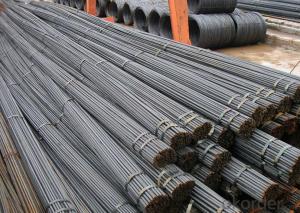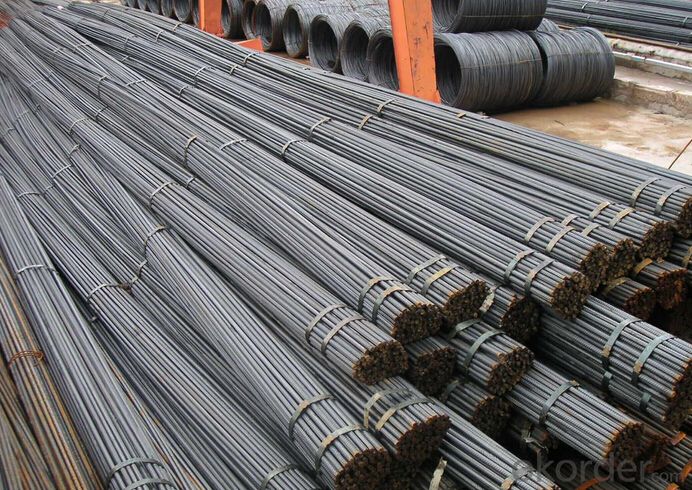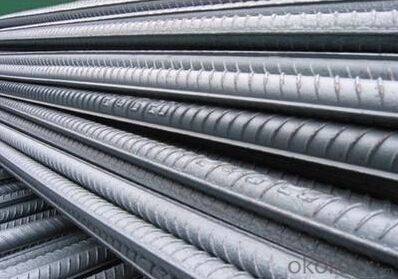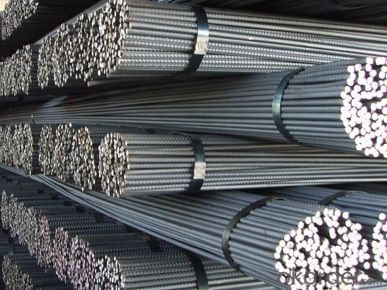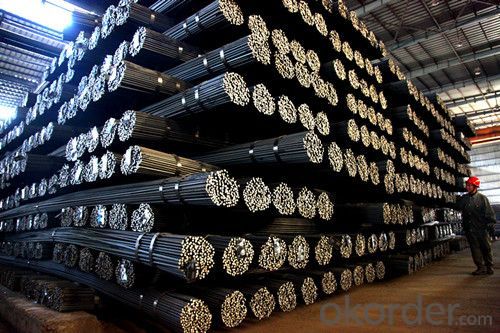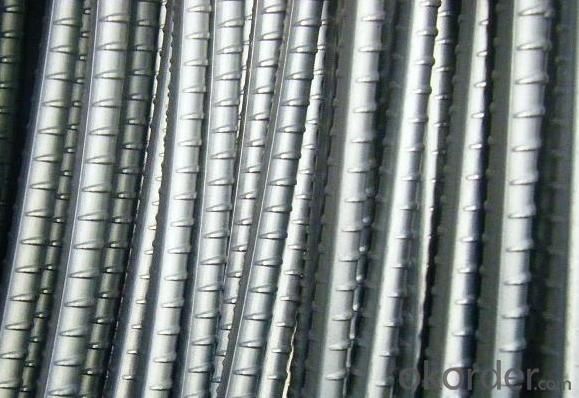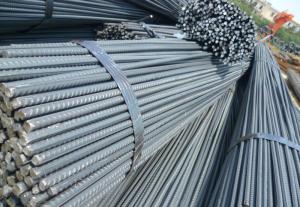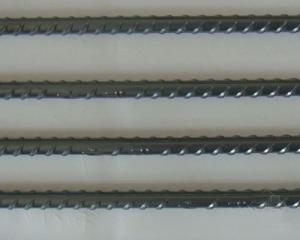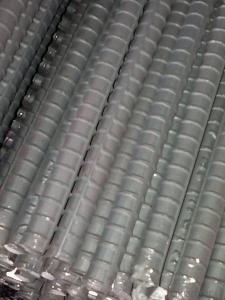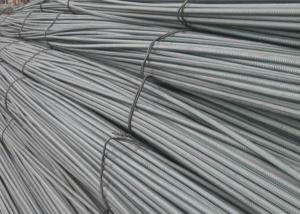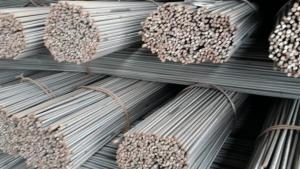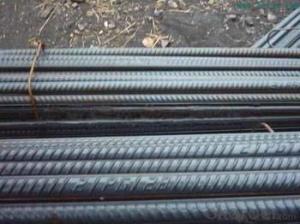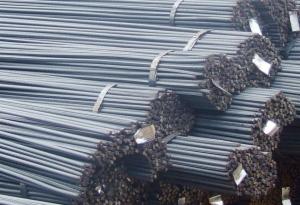10mm Construction Hot Rolled Deformed Steel Rebar
- Loading Port:
- Tianjin
- Payment Terms:
- TT OR LC
- Min Order Qty:
- 100 m.t.
- Supply Capability:
- 10000 m.t./month
OKorder Service Pledge
Quality Product, Order Online Tracking, Timely Delivery
OKorder Financial Service
Credit Rating, Credit Services, Credit Purchasing
You Might Also Like
Specification
Standard:
AISI,ASTM,JIS,GB,BS,DIN,API,EN
Technique:
Hot Rolled,Cold Rolled,Cold Drawn,ERW,Forged,Saw,Extruded,EFW,Spring
Shape:
U Channel,Square,C Channel,Hexagonal,Round,Rectangular,Oval,LTZ
Surface Treatment:
Galvanized,Coated,Copper Coated,Color Coated,Oiled,Dry,Chromed Passivation,Polished,Bright,Black,PVDF Coated
Steel Grade:
Q195,Q215,Q215B,Q235B,RHB335,HRB400,200 Series,300 Series,400 Series,600 Series,SS400-SS490,10#,20#,A53(A,B),Q235
Certification:
ISO,SGS,BV,IBR,RoHS,CE,API,BSI,UL
Thickness:
6-34mm
Width:
6-34mm
Length:
12
Outer Diameter:
6-32mm
Net Weight:
10kg
Packaging:
seaworthy packaging
10mm Construction Hot Rolled Deformed Steel Rebar
Details of the 10mm Construction Hot Rolled Deformed Steel Rebar
| Standard & Grade: | GB1499-98 : HRB335,HRB400,HRB500 |
| BS4449-1997 : GR460,GR500 | |
| CAN/CSA-G30.18-M92 : 400W | |
| ASTM A615 : Gr.40, Gr.60 | |
| Diameter: | 6mm;8mm;10mm;12mm;14mm;16mm;18mm;20mm;22mm;25mm;28mm;30mm;32mm;35mm;40mm |
| Length: | 6m,9m,12m |
| Packing: | Bundle packing |
| Origin: | China |
| Application: | Construction,Road,Machinery processing,Welding fields. |
| Delivery time: | 10-25 days |
| Shipment: | By bulk vessel or Container |
| Documents: | Mill Test Certificate,Commercial Invoice,Packing List,Certificate of Origin |
Company Introduction of the 10mm Construction Hot Rolled Deformed Steel Rebar
CNBM International Corporation is the most import and export platform of CNBM group(China National Building Material Group Corporation) ,which is a state-owned enterprise, ranked in 270th of Fortune Global 500 in 2015.
With its advantages, CNBM International are mainly concentrate on Cement, Glass, Iron and Steel, Ceramics industries and devotes herself for supplying high quality series of refractories as well as technical consultancies and logistics solution.

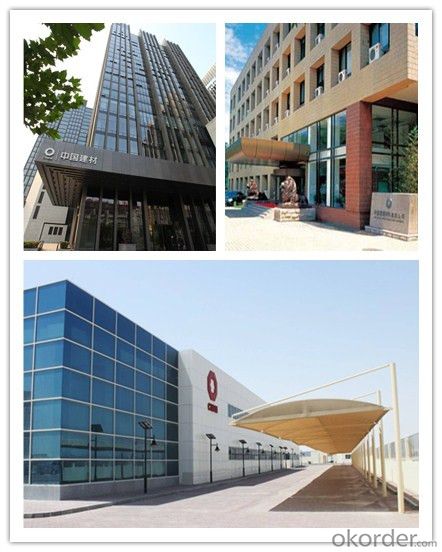
Packaging & Delivery of the 10mm Construction Hot Rolled Deformed Steel Rebar
| Packaging Detail | Sea worthy packing /as per customer's packing instruction |
| Delivery Detail | 15 ~ 40 days after receiving the deposit |
FAQ
| Are you a trading company or manufacturer? | Manufacturer |
| What’s the MOQ? | 1000m2 |
| What’s your delivery time? | 15-20 days after downpayment received |
| Do you Accept OEM service? | Yes |
| what’s your delivery terms? | FOB/CFR/CIF |
| What's the Payment Terms? | 30% as deposit,70% before shipment by T/T |
| Western Union acceptable for small amount. | |
| L/C acceptable for large amount. | |
| Scrow ,Paybal,Alipay are also ok | |
| Why choose us? | Chose happens because of quality, then price, We can give you both. Additionally, we can also offer professional products inquiry, products knowledge train (for agents), smooth goods delivery, excellent customer solution proposals. |
| What's your available port of Shipment? | Main Port, China |
| What’s your featured services? | Our service formula: good quality+ good price+ good service=customer's trust |
| Where are your Market? | Covering more than 160 countries in the world |
- Q: Are steel rebars suitable for use in earthquake-resistant structures?
- Yes, steel rebars are suitable for use in earthquake-resistant structures. Steel rebars, also known as reinforcing bars, are commonly used in construction to provide structural strength and reinforcement. They have been proven to be effective in improving the strength and ductility of concrete structures, making them more resistant to seismic forces. During an earthquake, structures are subjected to intense shaking and ground motion. Steel rebars help in distributing and dissipating the energy generated by these seismic forces, thereby reducing the vulnerability of a structure to damage or collapse. The use of steel rebars enhances the overall structural integrity and stability, enabling buildings and other infrastructure to withstand the lateral and vertical forces associated with earthquakes. Moreover, steel rebars possess excellent tensile strength, which is crucial for seismic resistance. Unlike concrete, which is strong in compression but weak in tension, steel rebars provide the necessary reinforcement to counteract tensile stresses caused by seismic activity. This ability to resist both compression and tension makes steel rebars an ideal choice for earthquake-resistant structures. Additionally, steel rebars can be designed and installed in such a way that they provide additional ductility to a structure. Ductility refers to a material's ability to undergo deformation without fracturing. During an earthquake, structures with higher ductility can undergo significant deformations and absorb energy, reducing the risk of catastrophic failure. Steel rebars are known for their high ductility, allowing them to effectively absorb and dissipate seismic energy. In conclusion, steel rebars are highly suitable for use in earthquake-resistant structures. Their strength, ability to resist both compression and tension, and high ductility make them an essential component in ensuring the structural integrity and safety of buildings and infrastructure in seismic-prone areas.
- Q: What are the different types of steel rebars used in marine structures?
- The different types of steel rebars commonly used in marine structures include epoxy-coated rebars, stainless steel rebars, and galvanized rebars. These types of rebars are specifically chosen for their high corrosion resistance properties, as they are exposed to the harsh marine environment. Epoxy-coated rebars provide a protective coating that prevents corrosion, while stainless steel rebars are inherently resistant to corrosion. Galvanized rebars are coated with a layer of zinc to prevent rusting and offer excellent durability in saltwater conditions.
- Q: Can steel rebars be used in structures with limited construction timeframes?
- Structures with limited construction timeframes can indeed utilize steel rebars. These rebars are frequently employed in construction projects due to their remarkable tensile strength, making them ideal for reinforcing concrete structures. Speedy and efficient installation is achievable with steel rebars, enabling faster construction compared to alternative reinforcement materials. Moreover, steel rebars offer durability and long-term stability, guaranteeing the integrity of the structure, even in time-constrained projects. Hence, employing steel rebars proves to be an effective solution for structures with limited construction timeframes, as they deliver both strength and swiftness in the construction process.
- Q: How do steel rebars contribute to the overall fire resistance of a structure?
- Enhancing the fire resistance of a structure, steel rebars, also known as reinforcing bars, play a vital role. They contribute to the overall fire resistance in various ways. Primarily, steel rebars are made from a material renowned for its high melting point and exceptional heat resistance. As a result, even in the event of a fire, the rebars maintain their structural integrity and do not easily deform or collapse. This is especially crucial for tall buildings where temperatures can reach extreme levels during a fire. Furthermore, the presence of steel rebars aids in the even distribution of heat throughout the structure. When exposed to high temperatures, steel absorbs and conducts heat away from the fire source, preventing concentrated hotspots and reducing the risk of structural failure. This redistribution of heat helps maintain the stability and integrity of the building, allowing occupants valuable time to safely evacuate. Moreover, steel rebars are commonly embedded within concrete, forming a composite material called reinforced concrete. The combination of steel and concrete creates a synergistic effect in terms of fire resistance. While steel possesses high tensile strength, concrete exhibits excellent compressive strength. When exposed to fire, the concrete acts as a protective layer, slowing down the transfer of heat to the steel rebars. This delay in heat transfer enables the steel to retain its strength for a longer period, further enhancing the fire resistance of the structure. Additionally, steel rebars aid in preventing the spread of fire by creating compartments within the building. In the event of a fire, the reinforced concrete structure acts as a barrier, limiting the fire's ability to spread from one area to another. This containment of fire reduces potential damage and facilitates the effective control and extinguishing of the fire by emergency responders. In conclusion, steel rebars make a significant contribution to the overall fire resistance of a structure. Their high melting point, ability to redistribute heat, and combination with concrete create a dependable and durable fire-resistant system. By providing structural stability, preventing concentrated hotspots, and limiting the spread of fire, steel rebars play a critical role in ensuring the safety and protection of both the building and its occupants during a fire incident.
- Q: What is the role of steel rebars in basement wall construction?
- The role of steel rebars in basement wall construction is to provide reinforcement and structural support to the concrete wall. Steel rebars, also known as reinforcing bars, are typically made of carbon steel and are placed in the concrete before it is poured. The rebars are strategically positioned within the concrete to add strength and stability to the wall. They help to distribute the load and forces that the wall may encounter, such as soil pressure or lateral forces from the surrounding environment. This reinforcement prevents the wall from cracking or collapsing under these external pressures, ensuring its durability and structural integrity. In addition to reinforcing the basement wall, steel rebars also help to control shrinkage and expansion of the concrete due to temperature changes. By providing a framework within the wall, the rebars help to limit the formation of cracks and maintain the overall stability of the structure. Overall, the presence of steel rebars in basement wall construction significantly enhances the strength and durability of the concrete wall. They play a crucial role in ensuring the integrity of the structure and protecting it from potential damage or failure.
- Q: Can steel rebars be used for both residential and commercial construction?
- Yes, steel rebars can be used for both residential and commercial construction. Steel rebars are commonly used as reinforcement in concrete structures to provide additional strength and stability. They are suitable for various construction projects, including residential buildings, commercial buildings, bridges, and infrastructure projects. The use of steel rebars ensures that the concrete structure can withstand heavy loads, seismic activity, and other external forces. Whether it is a small residential house or a large commercial complex, steel rebars are a reliable and commonly used material for reinforcing concrete structures in both residential and commercial construction.
- Q: What are the different types of steel rebars used in underground structures?
- There exists a variety of steel rebars that are frequently utilized in underground structures, each possessing its own unique properties and characteristics. The decision regarding which type of rebar to use depends on a multitude of factors, such as the project's specific requirements, the necessary load-bearing capacity, and the environmental conditions of the underground structure. To begin with, there are mild steel rebars, which are also referred to as carbon steel rebars. These are the most commonly employed type due to their affordability and widespread availability. Mild steel rebars possess a low carbon content and offer commendable tensile strength, rendering them suitable for general construction purposes in underground structures. Next, we have high strength deformed (HSD) rebars, which are crafted from carbon steel and undergo additional heat treatment processes. These processes result in heightened yield strength and improved resistance to corrosion. HSD rebars find common usage in areas with high seismic activity or in situations where an increased load-bearing capacity is required. Furthermore, there are epoxy-coated rebars, which are specifically designed to combat aggressive environments that underground structures can be exposed to, including moisture and chemicals. By applying an epoxy coating to the surface of the rebar, enhanced corrosion resistance is achieved. This coating acts as a protective barrier, reducing the risk of corrosion and prolonging the lifespan of the rebar. Stainless steel rebars also play a significant role in underground structures. They possess an exceptional resistance to corrosion, which makes them ideal for usage in harsh underground environments. They prove particularly beneficial in structures where chloride or other corrosive agents are present, such as underground water treatment facilities or sewer systems. Lastly, there are galvanized rebars, which are coated with a layer of zinc to provide corrosion protection. This type of rebar is commonly employed in underground structures where moisture or exposure to corrosive elements is a concern. The zinc coating acts as a sacrificial layer, corroding in place of the rebar and extending its service life. In conclusion, underground structures employ various types of steel rebars, including mild steel rebars, high strength deformed rebars, epoxy-coated rebars, stainless steel rebars, and galvanized rebars. The selection of the appropriate rebar type is contingent upon the specific requirements and environmental conditions of the underground structure.
- Q: How do steel rebars affect the overall structural integrity of a building?
- Steel rebars play a crucial role in enhancing the overall structural integrity of a building. They provide reinforcement and strength to the concrete, making it more durable and resistant to various external forces. Firstly, steel rebars act as tension members in reinforced concrete structures. Concrete itself is strong in compression but weak in tension. By embedding steel rebars within the concrete, the composite material is able to withstand tensile forces without cracking or failing. This ensures that the building can withstand the tensile stresses induced by factors such as wind load, seismic activity, and ground settlement. Moreover, steel rebars help to distribute and dissipate loads evenly throughout the structure. They enhance the load-bearing capacity of the concrete, allowing it to withstand heavier loads and prevent the formation of cracks. The rebars also help to control the propagation of any cracks that may occur due to shrinkage or thermal expansion, thereby preventing catastrophic failure. In addition, steel rebars improve the ductility of the reinforced concrete structure. Ductility refers to the ability of a material to deform under stress before reaching its breaking point. By adding steel rebars, the concrete gains the ability to bend and stretch without losing its strength. This is particularly important in areas prone to earthquakes, as the building can absorb and dissipate the energy generated by seismic forces. Furthermore, steel rebars increase the durability and longevity of the building. They provide protection to the concrete by preventing corrosion and degradation. When properly coated and installed, rebars act as a barrier against moisture and other corrosive elements, thereby preserving the structural integrity of the building over time. In conclusion, steel rebars significantly impact the overall structural integrity of a building. They reinforce the concrete, enhance its load-bearing capacity, improve ductility, and increase durability. Incorporating steel rebars into construction ensures that the building can withstand various external forces and maintain its stability and safety for a prolonged period.
- Q: How do steel rebars contribute to the overall sustainability of the construction industry?
- Steel rebars contribute to the overall sustainability of the construction industry in several ways. Firstly, steel rebars are made from recycled materials, reducing the demand for new resources and minimizing the environmental impact of steel production. Additionally, steel rebars are highly durable and have a long lifespan, ensuring the longevity and stability of structures, reducing the need for frequent repairs or replacements. Moreover, the use of steel rebars in reinforced concrete allows for the construction of taller and more complex structures, maximizing the efficient use of land and reducing the need for additional construction projects. Overall, steel rebars play a crucial role in improving the sustainability of the construction industry by promoting resource conservation, durability, and efficient construction practices.
- Q: How are steel rebars installed in concrete?
- Steel rebars are installed in concrete by first placing them in the desired locations within the concrete formwork. The rebars are then secured in place using wire ties or rebar chairs to ensure they remain in the correct position during the pouring and curing process. This helps to reinforce the concrete and provide strength to the structure.
Send your message to us
10mm Construction Hot Rolled Deformed Steel Rebar
- Loading Port:
- Tianjin
- Payment Terms:
- TT OR LC
- Min Order Qty:
- 100 m.t.
- Supply Capability:
- 10000 m.t./month
OKorder Service Pledge
Quality Product, Order Online Tracking, Timely Delivery
OKorder Financial Service
Credit Rating, Credit Services, Credit Purchasing
Similar products
Hot products
Hot Searches
Related keywords
